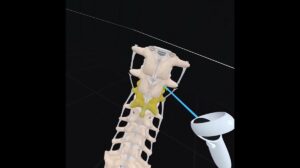NEW YORK (Reuters Health) – A network of altered genes appears to play a key role in the pathogenesis of gliomas, according to a report in the Journal of the American Medical Association for July 15.
The results of another study in the same issue show that monosomy of chromosome 10 is associated with dysregulation of epidermal growth factor signaling in glioblastomas.
In analyzing the genomic and clinical profiles of 501 patients with gliomas, Dr. Markus Bredel, from Northwestern University Feinberg School of Medicine, Chicago, and colleagues found that these brain tumors often have mutations associated with a non-random distinct genetic landscape during formation; and these mutations are linked with patient prognosis.
In particular, the researchers found a consistent pattern of chromosomal changes, involving regions on 1p, 7, 8q, 9p, 10, 12q, 13q, 19q, 20, and 22q. Further analysis revealed that the regions contain genes with possible synergistic, tumor-promoting associations.
The team also identified seven landscape genes that were associated with patient survival — POLD2, CYCS, MYC, AKR1C3, YME1L1, ANXA7, and PDCD4.
“The alteration of multiple networking genes by recurrent chromosomal aberrations in gliomas deregulates critical signaling pathways through multiple, cooperative mechanisms,” the authors conclude.
In the second study, Dr. Bredel and co-authors investigated why glioblastomas often show both monosomy of chromosome 10 and gains of the epidermal growth factor receptor gene locus on chromosome 7. To this end, they conducted a genetic analysis of 543 high-grade gliomas.
The team found that monosomy of chromosome 10 promoted tumorigenic epidermal growth factor signaling through loss of the gene for annexin A7, a calcium-dependent guanosine triphosphatase. The gene has been thought to have tumor-suppressing properties for breast and prostate cancer.
In an accompanying editorial, Dr. Boris Pasche, from the University of Alabama at Birmingham, and Dr. Richard M. Myers, from the HudsonAlpha Institute for Biotechnology, Huntsville, Alabama, comment that the findings from the first study have potentially “significant” clinical implications.
“First, they highlight a pattern of codependent genetic interactions, which will need to be taken into account when designing novel therapeutic interventions in this otherwise therapy-refractory disease,” they note. “Second, they provide a novel prognostic tool that may guide future therapeutic interventions.”
Reference:
JAMA 2009;302:261-289,325-326.




